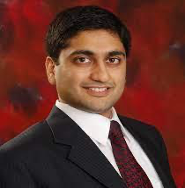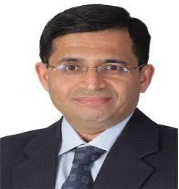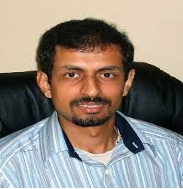hi
सी-डॉट का “भारत 5G गठबंधन”
भारत के लिए 5G प्रौद्योगिकी का सहयोगात्मक विकास
भारत और 5G
यह स्वीकार करते हुए कि 5G नेटवर्क का कार्यान्वयन देश की सामाजिक-आर्थिक वृद्धि पर परिवर्तनीय प्रभाव डालेगा, जिसमें कृषि, स्वास्थ्य, बैंकिंग, रेलवे, शिक्षा, शहरी विकास, निर्माण, जल और बिजली जैसे कई आर्थिक क्षेत्रों पर भी प्रभाव पड़ेगा, भारत का ध्यान 5G सेवाओं के विकास और कार्यान्वयन पर जल्द से जल्द है। इस समय की आवश्यकता है कि देश की महत्वपूर्ण संचार अवसंरचना को सुरक्षित स्वदेशी प्रौद्योगिकियों के माध्यम से तीव्र और प्रभावी तरीके से संरक्षित किया जाए। स्वदेशी समाधानों का निर्माण, जो घरेलू और वैश्विक बाजारों में प्रतिस्पर्धा कर सकें, से बेहतर कोई विकल्प नहीं है।
यह तथ्य कि दूरसंचार प्रौद्योगिकी भारत के डिजिटल भविष्य के लिए महत्वपूर्ण है, इसे भारतीय निजी उद्योग और सरकार दोनों के लिए यह आवश्यक बनाता है कि वे मिलकर 5G प्रौद्योगिकियों और उसके आगे के अनुसंधान और विकास में निवेश करने के लिए एक स्थायी मॉडल विकसित और अपनाएं। मौजूदा स्थिति में, जब तक विश्वसनीय स्वदेशी विकल्प तैयार नहीं किया जाता, 5G के क्षेत्र में दूरसंचार अवसंरचना स्थापित करने और अपग्रेड करने के लिए, भारत को एक बार फिर से वैश्विक कंपनियों से प्रौद्योगिकी आयात पर निर्भर रहने के अधिक महंगे विकल्प को अपनाने के लिए मजबूर होना पड़ सकता है। जब दूरसंचार क्षेत्र पहले से ही इस अगली प्रौद्योगिकी क्रांति के कगार पर है, तो स्वदेशी 5G प्रौद्योगिकी विकसित करने का इससे बेहतर समय नहीं हो सकता।
सी-डॉट का “भारत 5G गठबंधन”
सेंटर फॉर डेवलपमेंट ऑफ टेलीमैटिक्स (सी-डॉट), भारत सरकार के दूरसंचार विभाग (डीओटी) का एक प्रमुख दूरसंचार प्रौद्योगिकी केंद्र है। सी-डॉट के पास भारतीय परिदृश्य के लिए विशेष रूप से अनुकूल दूरसंचार प्रौद्योगिकियों के स्वदेशी डिजाइन, विकास और उत्पादन में तीन दशकों से अधिक का अनुसंधान और विकास का अनुभव है। यह भारतीय दूरसंचार नेटवर्क के डिजिटलीकरण प्रौद्योगिकियों के क्षेत्र में अग्रणी रहा है। सी-डॉट के उत्पाद पोर्टफोलियो में स्विचिंग और रूटिंग, ऑप्टिकल कम्युनिकेशन, वायरलेस कम्युनिकेशन, मोबाइल प्रौद्योगिकियां, नेटवर्क सुरक्षा, उन्नत एन्क्रिप्शन तकनीक और पोस्ट-क्वांटम क्रिप्टोग्राफी आधारित समाधान, नेटवर्क प्रबंधन, एम2एम/आईओटी, कृत्रिम बुद्धिमत्ता/मशीन लर्निंग और अन्य दूरसंचार सॉफ्टवेयर शामिल हैं।
सी-डॉट ने टीसीएस और तेजस के साथ साझेदारी में स्वदेशी रूप से विकसित 4G समाधानों का सफलतापूर्वक परीक्षण किया है। बीएसएनएल ने देश के चार क्षेत्रों में 4G कोर और आरएएन (रेडियो एक्सेस नेटवर्क) की तैनाती के लिए प्रारंभिक आदेश दिया है। सी-डॉट अब अपने 4G कोर को 5G एनएसए (नॉन-स्टैंडअलोन) में अपग्रेड करने पर काम कर रहा है, जिसे अगस्त 2022 तक पूरा किया जाना है। सरकार ने सी-डॉट को 5G एसए कोर, 5G आरएएन और अन्य संबंधित 5G प्रौद्योगिकियां प्रदान करने का कार्य सौंपा है। इसलिए, सी-डॉट उद्योग और शिक्षा क्षेत्र के कई खिलाड़ियों के साथ 5G में सहयोगात्मक अनुसंधान और विकास करने के लिए एक गठबंधन बना रहा है।
सी-डॉट तीन साल की अवधि में 5G उत्पादों का एक संपूर्ण सूट प्रदान करने का इरादा रखता है। इसके लिए सरकार द्वारा पर्याप्त बजट आवंटन किया गया है। यह गठबंधन डीओटी के मार्गदर्शन में बनाया जा रहा है। यह गठबंधन उद्योग, शिक्षा क्षेत्र, स्टार्टअप्स आदि में चल रहे विभिन्न अनुसंधान और विकास प्रयासों को एक साथ लाने के लिए एक छत्र परियोजना का प्रस्ताव रखता है। सी-डॉट परियोजना का प्रबंधन करेगा और आवश्यक समर्थन, जिसमें वित्तीय सहायता भी शामिल है, प्रदान करेगा, ताकि भारत के लिए 5G का निर्माण और विकास सक्षम हो सके। सी-डॉट का भारत 5G गठबंधन नेतृत्व प्रदान करेगा, सर्वोत्तम प्रथाओं को बढ़ावा देगा, अनुसंधान विचार उत्पन्न करेगा और 5G के विकास और इसके कार्यान्वयन के लिए पारिस्थितिकी तंत्र भागीदारों को तकनीकी और वित्तीय सहायता प्रदान करेगा।
स्वदेशी 5G विकास के लिए इस गठबंधन के तहत निम्नलिखित दस अलग-अलग संघ बनाए गए हैं:
- 5G एसए (स्टैंडअलोन) कोर नेटवर्क संघ
- 5G ओपन आरएएन (रेडियो एक्सेस नेटवर्क) एफआर-1 संघ
- 5G ओपन आरएएन (रेडियो एक्सेस नेटवर्क) एफआर-2 संघ
- 5G ट्रांसपोर्ट संघ
- 5G एप्लिकेशन संघ
- 5G एंटरप्राइज़ नेटवर्क संघ
- 5G डेटा एनालिटिक्स संघ
- 5G नेटवर्क प्रबंधन, स्वचालन और आर्केस्ट्रेशन संघ
- 5G सुरक्षा संघ
- 5G डिवाइस संघ
प्रत्येक संघ में उद्योग और शैक्षणिक संस्थानों के सदस्य होंगे, जो सिस्टम/उप-प्रणालियों को बाज़ार-तैयार उत्पाद के विकास के लिए लाएंगे। उदाहरण के लिए, आरएएन संघ में आरएएन के क्षेत्र में काम करने वाले सदस्य होंगे जैसे आरयू, डीयू, सीयू, आरआईसी आदि।

वर्तमान 5G गठबंधन में भाग लेने वाले सदस्य
5G प्रौद्योगिकी सलाहकार बोर्ड (टीएबी)
सी-डॉट ने 5G प्रौद्योगिकी के लिए एक प्रौद्योगिकी सलाहकार बोर्ड (टीएबी) स्थापित किया है, जिसमें उद्योग और शिक्षा क्षेत्र के विशेषज्ञ शामिल हैं, जो सी-डॉट को तकनीकी विकास और नीति दिशा में सलाह देंगे। टीएबी में निम्नलिखित प्रमुख 5G क्षेत्रों के विशेषज्ञ शामिल होंगे:
- 5G आरएएन
- 5G कोर
- 5G के लिए उन्नत ऑप्टिकल एक्सेस और ट्रांसपोर्ट प्रौद्योगिकियां
- 5G सुरक्षा और एनालिटिक्स
- 5G के लिए कृत्रिम बुद्धिमत्ता और संज्ञानात्मक विज्ञान
- 5G के लिए IoT और M2M एकीकरण
- 5G के लिए एंटरप्राइज़ और एप्लिकेशन
टीएबी के सदस्यों को प्रत्येक संघ को मार्गदर्शन प्रदान करने के लिए चुना जाएगा। प्रत्येक संघ का जनादेश आगे बढ़ाने के लिए अलग-अलग पैनल बनाए जाएंगे। प्रत्येक पैनल में टीएबी के कम से कम 5 सदस्य और प्रारंभिक कार्य प्रबंधन के लिए सी-डॉट के एक/दो सदस्य होंगे। प्रत्येक पैनल की अध्यक्षता टीएबी के एक सदस्य द्वारा की जाएगी। टीएबी सी-डॉट को अनुसंधान साझेदारी बनाने, भागीदारों के चयन, अनुसंधान प्रस्तावों की समीक्षा और उद्योग भागीदारों को निधि आवंटन की सिफारिश करने में भी मार्गदर्शन करेगा। टीएबी निम्नलिखित दृष्टिकोणों में से एक की सिफारिश कर सकता है, जिसका उद्देश्य 5G समाधान शीघ्रता से प्रदान करना है:
- सी-डॉट में इन-हाउस विकास
- अन्य भारतीय भागीदारों के साथ संयुक्त विकास
- आवश्यक कौशल और क्षमता वाले भारतीय भागीदारों को विकास कार्य आउटसोर्स करना
- प्रौद्योगिकी/आईपीआर को लाइसेंस करना, जहां भी उत्पाद निर्माण के लिए आवश्यक हो
- जहां भी उपलब्ध हो, भारतीय भागीदारों के पास पहले से मौजूद सिस्टम/उप-प्रणालियों को शामिल करना
प्रौद्योगिकी सलाहकार बोर्ड के सदस्य (वर्णानुक्रम में)

Prof. अभय करंदीकर
आई.आई.टी. कानपुर

Prof. अजित चतुवेर्दी
आईआईटी रूड़की

Sh. अमित अग्रवाल
सीओओ, Smallboard.com

Prof. अमृत भारद्वाज
आईआईएससी बेंगलुरु

Dr. आशुतोष दत्ता
जॉन्स हॉपकिन्स विश्वविद्यालय

Prof. भास्कर राममूर्ति
आईआईटी चेन्नई

Prof. गणपति पांडा
आईआईटी भुवनेश्वर

Dr. गिरि मांड्यम
सीएसए, क्वालकॉम

Sh. गुरु पारुलकर (टीबीसी)
वीपी इंटेल नेक्स और बोर्ड सदस्य, ओएनएफ

Sh. जगबीर सिंह
ग्रुप सीटीओ, वोडाफोन आइडिया इंडिया

Prof. किरण कूची
आईआईटी हैदराबाद

Prof. एम विद्यासागर
आईआईटी हैदराबाद

Sh. मनीष वटवानी
सीपीओ/सीएमओ, टेलिट

Prof. मनोज चौधरी
आईआईटी जोधपुर

Prof. मोनिशा घोष
नोट्रे डेम विश्वविद्यालय

लेफ्टिनेंट जनरल एम यू नायर, एवीएसएम, एसएम
सिग्नल ऑफिसर-इन-चीफ और सीनियर कर्नल कमांडेंट, कॉर्प्स ऑफ सिग्नल

Prof. मैथिली वुटुकुरु
आईआईटी मुंबई

Prof. नरेंद्र आहूजा
अर्बाना-शैंपेन में इलिनोइस विश्वविद्यालय

Prof. पी आर कुमार
टेक्सास ए एंड एम विश्वविद्यालय

Sh. प्रकाश संगम
संस्थापक, तंत्र विश्लेषक

Prof. राधा कृष्ण गंती
आईआईटी चेन्नई

Prof. राहुल मंघाराम
पेंसिल्वेनिया विश्वविद्यालय

Prof. राजा दत्त
आईआईटी खड़गपुर

Prof. राजीव शौरी
आईआईटी दिल्ली

Sh. -रणदीप सेखों
ग्रुप सीटीओ एयरटेल

Sh. रितु रंजन मित्तर
टीईसी दूरसंचार विभाग

Prof. समर अग्निहोत्री
आईआईटी मंडी

Prof. संतोष नागराज
सैन डिगो स्टेट यूनिवर्सिटी

Prof. सुनील कुमार
सैन डिगो स्टेट यूनिवर्सिटी

Prof. स्वर्ण कुमार
कार्नेगी मेलन विश्वविद्यालय

Sh. विवेक बंजाल
निदेशक मोबिलिटी, बीएसएनएल
भारत 5G एलायंस फंडिंग
फंडिंग भारत 5G एलायंस फंड के माध्यम से की जाएगी, जिसमें सी-डॉट मुख्य सुविधा प्रदाता होगा। यह फंड 5G तकनीक और संबंधित उत्पादों और समाधानों के विकास के लिए उपयोग किया जाएगा। सी-डॉट, कंसोर्टियम पैनल/टैब की सिफारिशों के आधार पर, एलायंस भागीदारों से पात्र परियोजना प्रस्तावों को फंड करेगा। यह फंडिंग इक्विटी, ऋण, राजस्व साझेदारी आदि के रूप में हो सकती है।
5G एलायंस परियोजना भागीदारी और फंडिंग प्रक्रिया
5G एलायंस परियोजना भागीदारी और फंड अनुमोदन चार चरणों की प्रक्रिया होगी
- वे भागीदार जो एलायंस में शामिल होने और 5G विकास परियोजना के लिए फंड प्राप्त करने में रुचि रखते हैं, सी-डॉट सहयोगात्मक अनुसंधान प्रकोष्ठ (CRC) को रुचि का एक बयान प्रस्तुत करेंगे। CRC संभावित भागीदारों से सीधे ये बयान प्राप्त कर सकता है या इन्हें खुली समस्या चुनौतियों, इवेंट्स, हैकाथॉन, प्रस्तावों के लिए कॉल आदि के माध्यम से आमंत्रित कर सकता है। CRC द्वारा प्रारंभिक जांच के बाद, प्रस्तावों को कंसोर्टियम पैनल (CP) को मूल्यांकन और फंडिंग के लिए अग्रेषित किया जाएगा।
- प्रत्येक कंसोर्टियम के लिए एक CP होगा। प्रत्येक CP में TAB से पांच या अधिक तकनीकी विशेषज्ञ (डोमेन विशेषज्ञता के साथ) और सी-डॉट से एक तकनीकी विशेषज्ञ होंगे। CP अध्यक्ष किसी अन्य सदस्य को उपयुक्त समझे जाने पर शामिल कर सकता है। सी-डॉट के तकनीकी विशेषज्ञ एक प्रारंभिक रिपोर्ट तैयार करेंगे और CP को प्रस्तुत करेंगे। संबंधित CP प्रस्तावों का तकनीकी/रणनीतिक मूल्यांकन करेगा। CP 10 करोड़ रुपये तक के प्रस्तावों को मंजूरी दे सकता है। पैनल को फंडिंग को मंजूरी देने के लिए पांच सदस्यों का कोरम आवश्यक होगा। उच्च फंडिंग आवश्यकता वाले प्रस्ताव के लिए, CP प्रस्ताव को अपनी तकनीकी मूल्यांकन रिपोर्ट और सिफारिशों के साथ सहयोगात्मक अनुसंधान स्क्रीनिंग समिति (CSC) को अग्रेषित करेगा।
- CSC में TAB, सी-डॉट और DOT के तकनीकी विशेषज्ञ होंगे। CSC CPs द्वारा प्रस्तुत रिपोर्टों का मूल्यांकन करेगा और प्रस्ताव की तकनीकी योग्यता, सामाजिक प्रभाव, वाणिज्यिक व्यवहार्यता, जोखिम, फंडिंग विधियां, IPR, राजस्व साझेदारी आदि पर चर्चा करेगा। CSC प्रस्ताव को मंजूरी दे सकता है और 20 करोड़ रुपये तक का फंड प्रदान कर सकता है। फंडिंग को मंजूरी देने के लिए समिति को 10 सदस्यों का कोरम आवश्यक होगा। 20 करोड़ रुपये से अधिक फंड की आवश्यकता वाले प्रस्तावों के लिए, CSC अपनी सिफारिशों के साथ प्रस्तावों को DOT सचिव की अध्यक्षता वाली सी-डॉट संचालन समिति को अग्रेषित करेगा।
- भागीदारी प्रक्रिया, चयन मानदंड, फंडिंग की विधि, राजस्व साझेदारी मॉडल आदि और भारत 5G एलायंस में शामिल होने के लिए सभी अन्य शर्तें सी-डॉट सहयोगात्मक अनुसंधान नीति (CCRP - 2022) से प्राप्त की जाएंगी।
एकीकृत एंड-टू-एंड कैंपस नेटवर्क का रोलआउट
सी-डॉट चतरपुर, नई दिल्ली में सी-डॉट कैंपस में 5G सिस्टम, सबसिस्टम और सेवाओं के इनडोर और आउटडोर परीक्षण के लिए रेडिएटिंग स्पेक्ट्रम के साथ एक कैंपस नेटवर्क स्थापित कर रहा है। यह परीक्षण नेटवर्क विभिन्न भागीदारों को उनके प्रोटोटाइप का परीक्षण, सत्यापन, प्रदर्शन मूल्यांकन आदि के लिए अवसर प्रदान करेगा, जिससे वाणिज्यिक ग्रेड उत्पादों का उत्पादन सुगम होगा।

